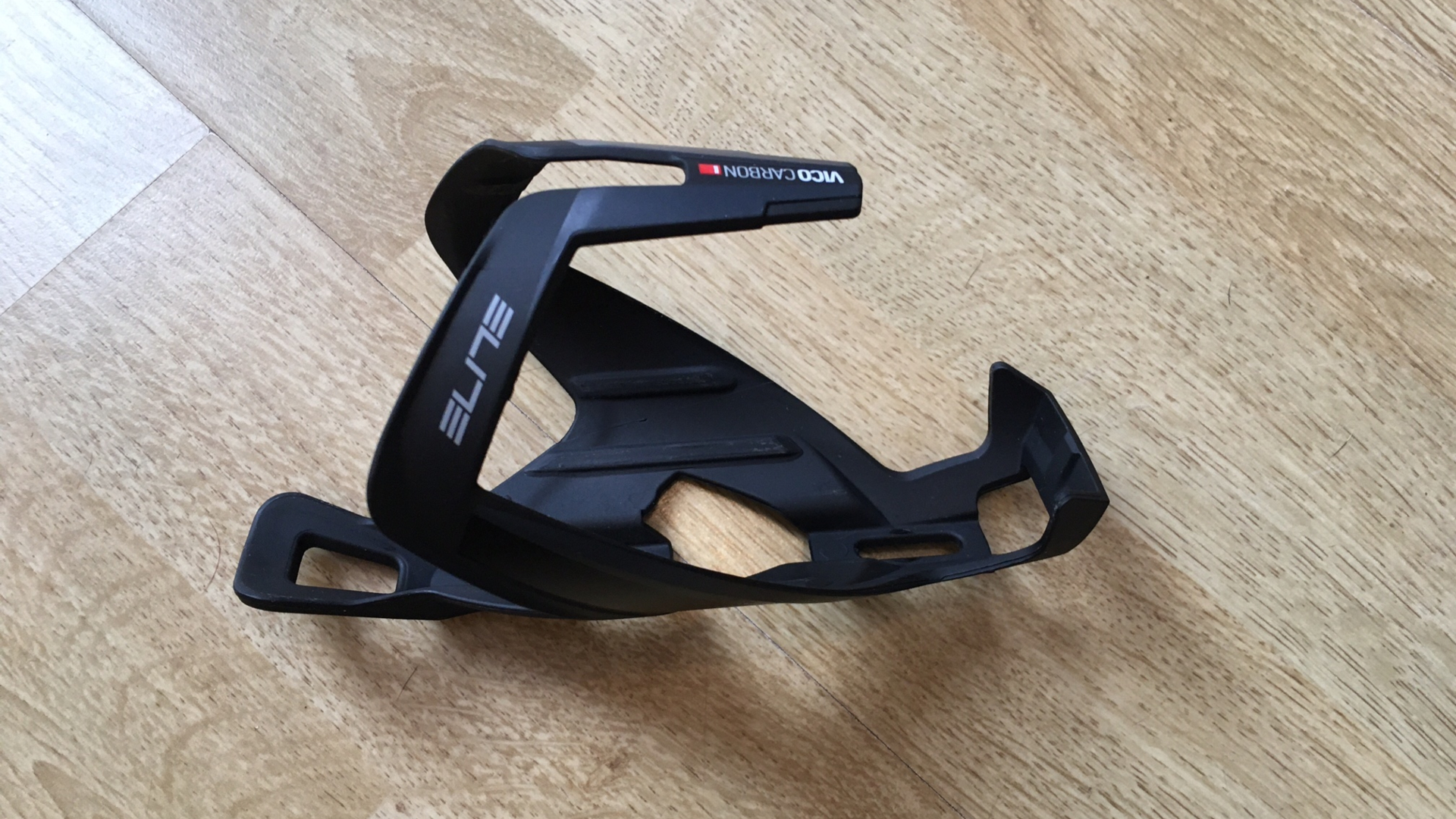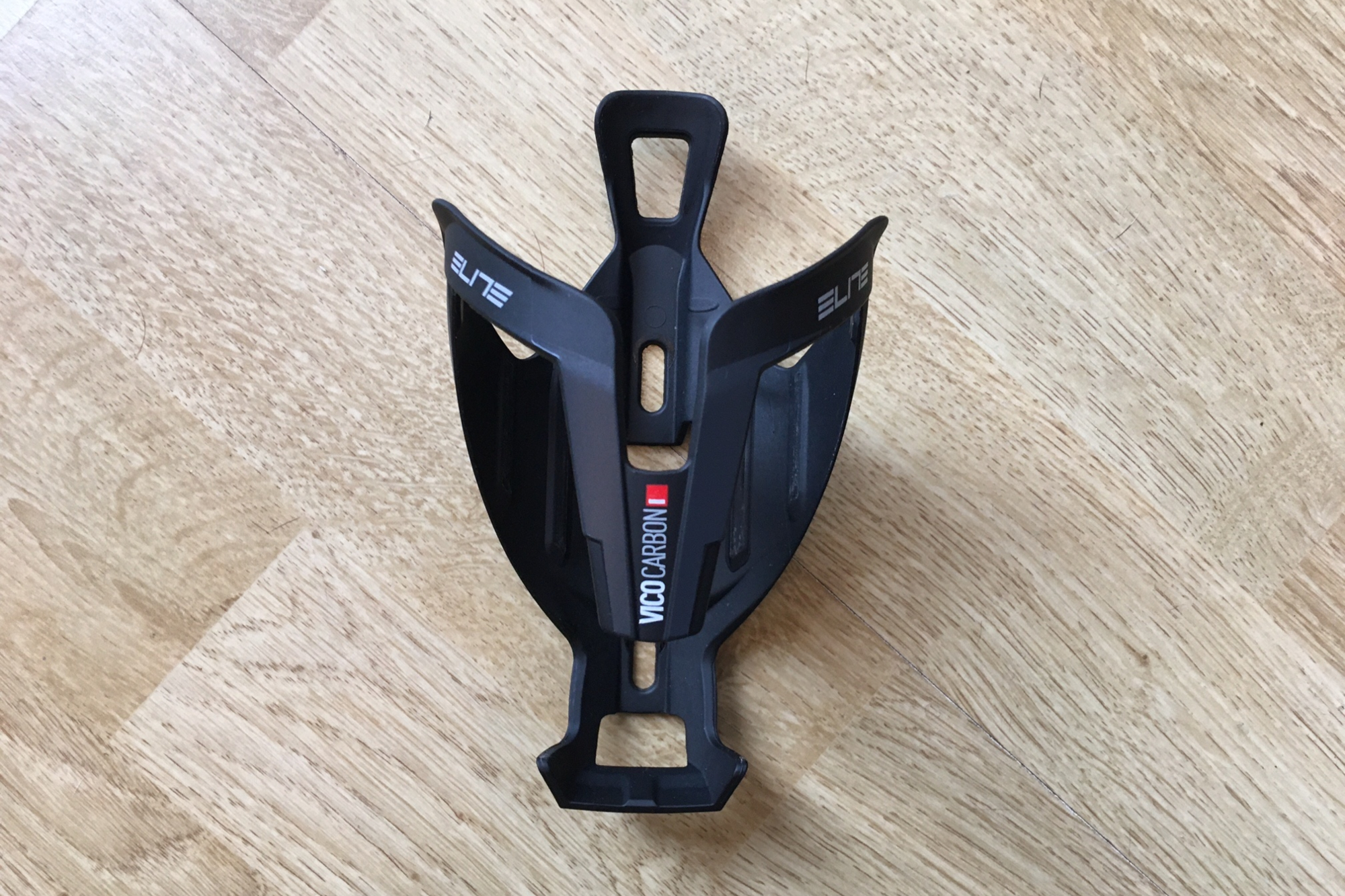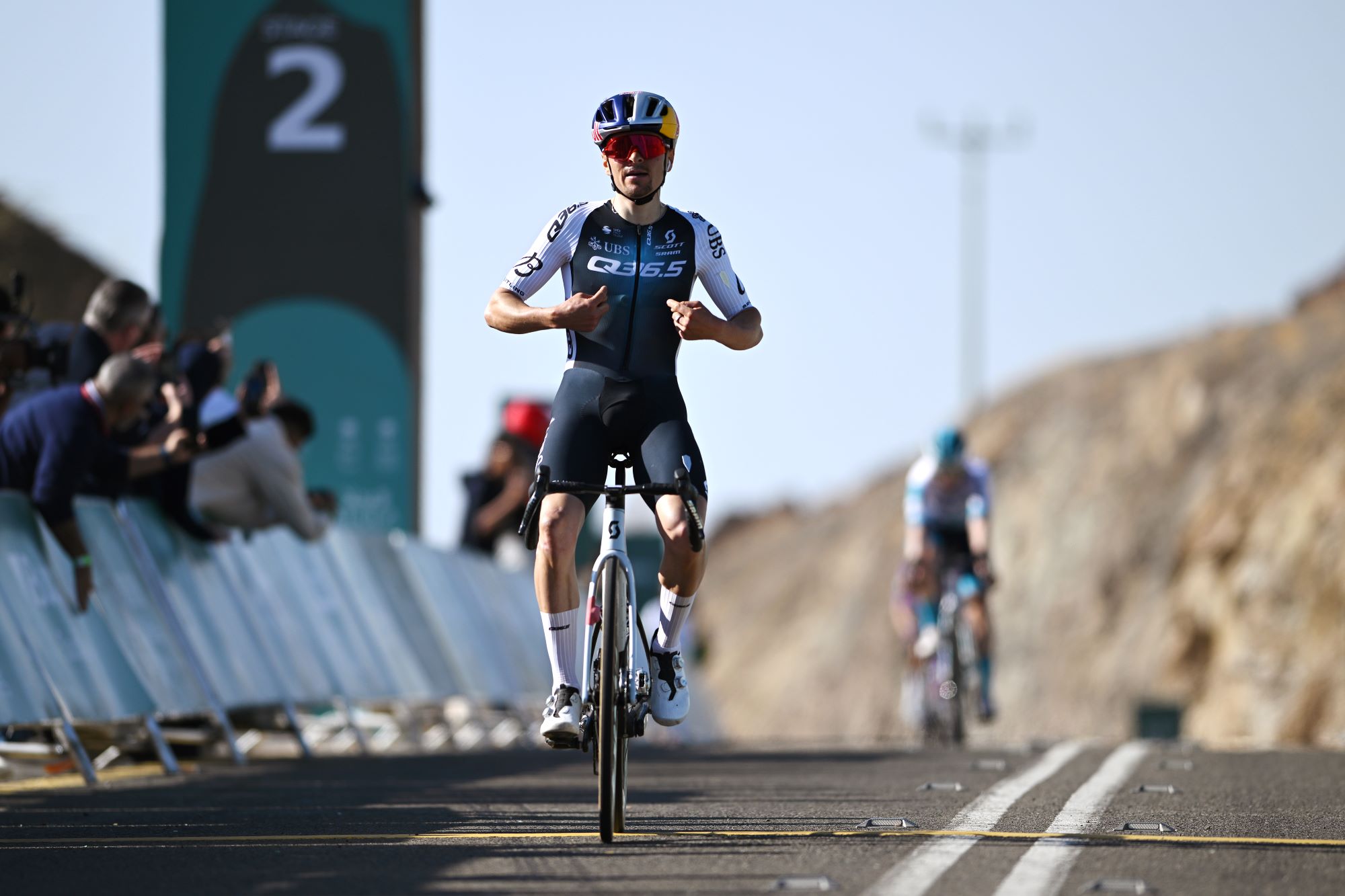Elite Vico Carbon bottle cage review
Light but with a firm grip

The Vico Carbon places greater emphasis on bottle retention than easy removal and does this with great success. My chosen bottle didn’t move a fraction even when riding on very poor quality road surfaces and there were no annoying rattles or vibrations. The trade off was that the Vico doesn’t relinquish its firm grip without a bit of gentle persuasion. However, it didn’t cause any real difficulties once I had got used to it. All in all, it’s a cage that would be a worthy addition to any road or gravel bike.
-
+
Provides a firm, rattle-free hold
-
+
Pretty light - 28g actual
-
+
Decently priced for carbon - RRP £26.00
-
+
Range of accent colours available
-
-
Bottle removal requires a gentle tug
You can trust Cycling Weekly.
Elite are know for making some of the best water bottle cages and have become almost synonymous with the product category. The Italian brand has featured heavily in the professional peloton for decades. Today it partners with a host of WorldTour teams including Team Ineos, UAE Team Emirates and Movistar. It’s extensive range of cages includes those made from metal, fibre-reinforced plastic (FRP) and carbon - including the Vico Carbon reviewed here.
Elite Vico Carbon - construction
While Elite hasn’t quite reinvented the bottle cage it has, over the years, seemingly pushed the envelope in both design and material use. It surely helps that its cages are imbued with the feedback from those aforementioned pro teams. And while it might not matter to you that you’re using the same device to hold your bidon as Geriant Thomas, it is somewhat reassuring that it's been tested at such a high level.
Take the Vico Carbon model. Made in Italy it’s used by the Grenadiers no less and reading Elite’s description of the cage is the result of much thought and subsequent innovation.
Firstly, it’s designed to work with any bike frame, including small sloping frames. In essence this should make this road-ready cage also applicable to gravel and mountain bikes too.
Elite says the registered design “optimises the gripping capability of the cage” in what it describes as “extreme conditions” such as riding at “high speed and (over) rocky terrains”.

The injection-molded carbon fibre construction, according to Elite, “features structural sections that vary according to the tension level applied to different areas of the bottle cage during use, ensuring high reliability and performance.”
I was unsure if this meant the cage used varying degrees of thickness in the carbon? On examination it’s hard to tell, although carbon’s strength advantage over resin does allow it to be trimmed down in areas to save weight. Regardless, the Vico does look, and feel, like a lightweight carbon cage that seems to balance high rigidity with a degree of flex.
The design is pretty straightforward, with a structure that wraps around the bottle at its side and front. The rear of the cage features a little ‘shelf’ at the base which the bottle rests on while at the top there’s an angled tab of sorts that provides additional grip. It results in a snug fit with the bottle, seemingly, held very securely indeed.
It’s a sleek shape that will be familiar to those who have used its Custom Race Plus cages. The difference here though, other than the material, is the Vico’s internal ridges - two on either side. Not mentioned in the product description, I assume they’re there to aid smooth insertion and removal of the bottle.
Elite lists the Vico’s weight as 23g on its website but 25g on the bottle packaging. On my kitchen scales it weighs 28g. Either way it’s a lightweight cage that shaves more than 10 grams off the Custom Race Plus.
Finally, the cage is offered seven different colours, which all use a gloss or matt black finish with an accent colour.
Elite Vico Carbon bottle cage - the ride
The first impression is just how firmly the cage hugs the bottle. It snaps into place with a reassuring ‘click’ as the bottle meets the shelf at the base of the cage. This means that it does require a little force as opposed to a cage that allows the bottle to slide in effortlessly.
The result however is a bottle that doesn’t budge. Not over broken tarmac. Not hopping off curbs. Not even rattling along a cycle path with exposed tree roots that have caused the surface to resemble a turbulent sea. A vice-like grip would be an apt description.
However, a securely held bottle has to be removed. I’m someone who likes to sip little and often on my rides. I found that I needed to give the bottle a pretty firm tug to remove it. It wasn’t a significant issue but I did find I needed to slow down and focus on the task at hand.
I switched bottles to see if a change in design made any difference to the ease of removal. The first few rides I had been using a Specialized Purist bottle. I then tried a CamelBak Podium. It’s a taller, slimmer design and, perhaps unsurprisingly, slid out a little easier than the stockier Spesh bidon.
Reassuringly though the Vico cage still gripped the narrower bottle just as firmly. Again, over varied terrain I sensed no sign of movement. I heard no rattles. And it remained so on all subsequent rides.
Value
At £26.00 /US$44.99 Elite's Vico is one of the best value carbon cages available. Specialized's S-Works Carbon Rib cage is only four grams lighter but retails as £70.00 / US$70.00. Likewise Bontrager's Pro Carbon cage is more expensive at £40 / US$65.00 but is a gram or two heavier that the Vico. Plastic cages are cheaper and Elite's Custom Race Plus cuts a very similar profile - it has an RRP of £13.99 / US$21.99 but is 12 grams heavier.
Verdict
The role of a bottle cage is a simple one. But at the heart of its job description lies a balance. How do you both hold a bottle securely yet allow it to be removed easily while on the move, often at speed? The Vico chooses to place greater emphasis on bottle retention and did this with great success. The bottle didn’t move a fraction even when riding on very poor quality road surfaces and there were no annoying rattles or vibrations. The trade off was that the Vico doesn’t relinquish its firm grip without a bit of gentle persuasion. However, it didn’t cause any real difficulties once I had got used to it. All in all, it’s a cage that would be a worthy addition to any road or gravel bike.
Specs
- Weight: 25g claimed (28g actual)
- Material: Carbon
- Diameter: 74mm
- Contact: elite-it.com
Do all bottle cages fit on all bikes?
The standard spacing for bottle cages mounts is 64mm / 2.5in and this applies to the overwhelming majority of bikes and bottle cages. You can be 99.9% certain that any bottle cage you buy will fit your bike. But as ever with these things, we can’t absolutely guarantee that there isn’t one brand of bikes or bottle cages doing things differently.
Where should I put my bottle cage on my bike?
Typically, bottle cages are best positioned inside the main frame of the bike, on the down-tube or on the seat-tube – or both!
These days, you will fairly often see bottle cage bosses on the underside of the down-tube and the fork legs. You can absolutely store bottles here, but they are harder to access. Generally, these mounts are best used for cargo cages and carrying tool kegs with spare parts, or dry bags full of other bits of kit.
How do you add more bottle cage mounts?
Perhaps the simplest way of carrying more bottles is buying a cage such as Topeak’s Ninja Cage, which can be strapped to your bike with a set of zip ties.
If you do really want extra mounts, you can buy band-on attachments with threads that can be strapped to your bike and allow you to mount whatever you want – although typically with a much lower weight limit than mounting directly to the frame.

Thank you for reading 20 articles this month* Join now for unlimited access
Enjoy your first month for just £1 / $1 / €1
*Read 5 free articles per month without a subscription

Join now for unlimited access
Try first month for just £1 / $1 / €1
Get The Leadout Newsletter
The latest race content, interviews, features, reviews and expert buying guides, direct to your inbox!
Luke Friend has worked as a writer, editor and copywriter for twenty five years. Across books, magazines and websites, he's covered a broad range of topics for a range of clients including Major League Baseball, the National Trust and the NHS. He has an MA in Professional Writing from Falmouth University and is a qualified bicycle mechanic. He has been a cycling enthusiast from an early age, partly due to watching the Tour de France on TV. He's a keen follower of bike racing to this day as well as a regular road and gravel rider.
-
 What does Q36.5 mean? We asked the people behind the Italian kit brand that sponsors Tom Pidcock's team
What does Q36.5 mean? We asked the people behind the Italian kit brand that sponsors Tom Pidcock's teamQ36.5's Luigi Bergamo and Lodovico Pignatti Morano take on Cycling Weekly's Q&A
By Tom Thewlis Published
-
 'If I were a tennis player then my career would be over': Remco Evenepoel contemplated early retirement after serious training accident
'If I were a tennis player then my career would be over': Remco Evenepoel contemplated early retirement after serious training accidentDouble Olympic champion was left with nerve damage and says his shoulder is not yet fully healed ahead of his return to racing at Brabantse Pijl
By Tom Thewlis Published
-
 'It can really push me along' - How a velodrome comeback is making Caleb Ewan faster on the road
'It can really push me along' - How a velodrome comeback is making Caleb Ewan faster on the roadAustralian says he'll "definitely" continue track work after rekindling passion
By Tom Davidson Published